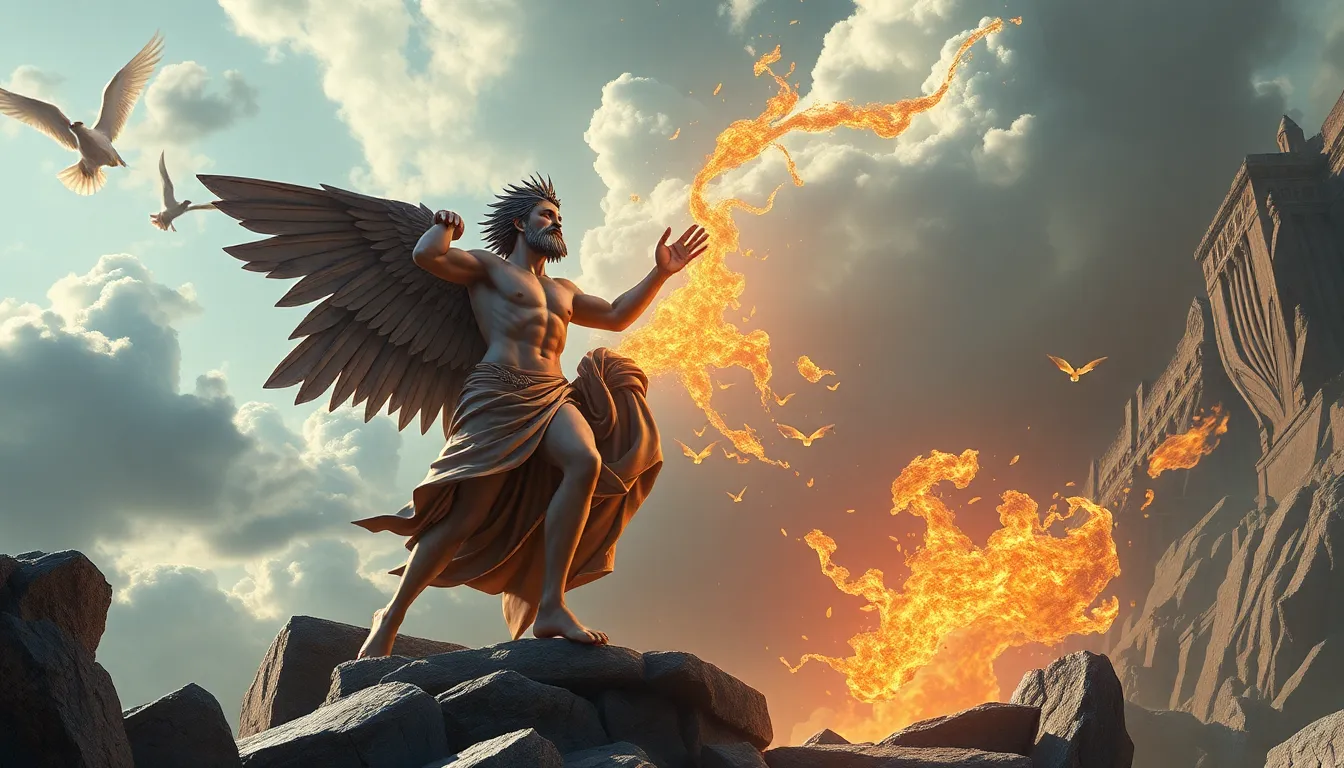The Dual Nature of Daedalus: Creator, Innovator, and Tragic Figure
I. Introduction
In the rich tapestry of Greek mythology, Daedalus stands out as a complex figure embodying both the brilliance of human creativity and the inherent tragedies that often accompany great innovation. Known for his extraordinary skills as a craftsman and engineer, Daedalus’s legacy is a blend of awe-inspiring creations and profound personal loss. This article aims to delve into the dual nature of Daedalus, exploring his role as a creator and innovator, as well as the tragic consequences that arose from his endeavors.
II. Historical Context of Daedalus
Daedalus’s origins are steeped in Greek mythology, where he is often depicted as a master craftsman and artist. His story is intertwined with various myths, primarily focusing on his relationship with his son Icarus and his tragic fall from grace.
A. Origins in Greek mythology
According to ancient texts, Daedalus was a skilled artisan from Athens who was exiled to Crete after being implicated in the murder of his nephew, Talos. His exile led him to serve King Minos, where his talents flourished.
B. Key myths and stories involving Daedalus
- The Labyrinth: Daedalus designed the Labyrinth to house the Minotaur, a creature that was half-man, half-bull.
- The Wings of Icarus: Perhaps his most famous creation, Daedalus fashioned wings from feathers and wax for himself and Icarus to escape from Crete.
- The Death of Icarus: This story encapsulates the tragic consequences of ambition and disobedience.
C. Cultural significance in ancient Greece
Daedalus became a symbol of the archetype of the inventor and craftsman. His stories were cautionary tales warning against hubris and the consequences of overreaching ambition.
III. Daedalus as a Creator
Daedalus’s mastery of craftsmanship and engineering is legendary. His creations reflect not only technical skill but also a deep understanding of art and aesthetics.
A. Mastery of craftsmanship and engineering
Daedalus was celebrated for his innovative designs and practical solutions. His ability to blend functionality with beauty set him apart from other craftsmen of his time.
B. Notable creations: the Labyrinth and the wings
Among his most notable works is the Labyrinth, a complex maze designed to contain the Minotaur. Additionally, the wings he created for himself and Icarus symbolize the heights of human ingenuity and the risks it entails.
C. The role of innovation in Daedalus’s identity
Innovation was at the core of Daedalus’s identity, making him a pioneer of art and technology in ancient Greece. His inventions not only served immediate purposes but also pushed the boundaries of what was possible.
IV. Daedalus as an Innovator
As an innovator, Daedalus’s impact extended beyond mythology into the realms of society and culture.
A. The impact of Daedalus’s inventions on society
Daedalus’s designs had far-reaching implications, influencing architecture, engineering, and art. His work laid the groundwork for future generations of creators.
B. The interplay between art and technology in his work
Daedalus exemplified the fusion of art and technology, showcasing how creativity can lead to practical advancements. His Labyrinth, while functional, was also a work of art, filled with intricate details and symbolism.
C. Recognition of Daedalus as a pioneer in various fields
His legacy as a pioneer spans multiple disciplines, including engineering, sculpture, and architecture, establishing him as a figure of inspiration for many artists and inventors throughout history.
V. The Tragic Aspects of Daedalus’s Life
Despite his achievements, Daedalus’s life was marked by tragedy, particularly through the story of his son Icarus.
A. The consequences of his success: the downfall of Icarus
While Daedalus sought to save himself and Icarus, the latter’s disregard for his father’s warnings resulted in a tragic fall, symbolizing the dangers of hubris and the limits of human ambition.
B. Themes of hubris and the limits of human ambition
The tale of Icarus serves as a poignant reminder of the consequences of overreaching, illustrating the thin line between success and disaster.
C. The personal and emotional toll of his innovations
Daedalus’s innovations came at a personal cost, leading to a life filled with regret and sorrow, as he witnessed the direct consequences of his creations.
VI. Daedalus in Literature and Art
Throughout history, Daedalus has been depicted in various forms of literature and art, highlighting his enduring influence.
A. Depictions of Daedalus in classical and modern literature
From Ovid’s “Metamorphoses” to contemporary novels and plays, Daedalus’s character continues to resonate, symbolizing the duality of creativity and tragedy.
B. Artistic interpretations of his character and stories
Artists have portrayed Daedalus in various lights, often emphasizing the tension between his role as a creator and the tragic consequences of his innovations.
C. Influence of Daedalus on contemporary creators and innovators
Modern creators in technology, art, and literature draw inspiration from Daedalus, reflecting on the themes of innovation and its implications in their own work.
VII. The Duality of Daedalus: A Symbol of Human Experience
Daedalus represents the duality of human experience, where creation and destruction coexist, illustrating the complexities of innovation.
A. The balance of creation and destruction in innovation
His story reveals that every act of creation carries the potential for destruction, reminding us that innovation must be approached with caution and responsibility.
B. Lessons learned from Daedalus’s life and legacy
Daedalus teaches us about the importance of humility and the need to recognize the limits of human capability, emphasizing the importance of wisdom in innovation.
C. The relevance of Daedalus’s dual nature in today’s world
In a contemporary context, Daedalus’s dual nature resonates with ongoing debates about technological advancements and their ethical implications, urging us to consider the consequences of our innovations.
VIII. Conclusion
In summary, Daedalus embodies the intricate balance of creativity and tragedy, serving as a reminder of the profound impact of innovation. His legacy continues to inspire and caution, highlighting the complexities of the human experience. As we reflect on Daedalus’s life, we recognize that the interplay of creativity and tragedy is a timeless aspect of our journey as individuals and as a society.




